
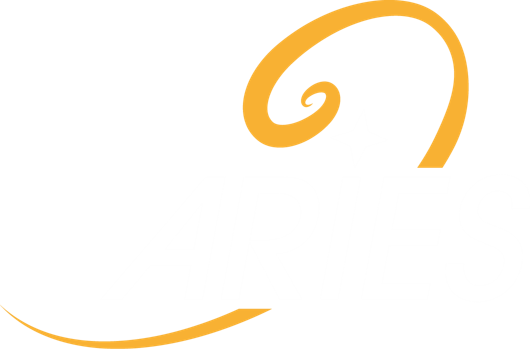

This project has received funding from the European Union’s Horizon 2020 Research and Innovation programme under Grant Agreement No 730871.
Comprehensive simulations of distortions and their mitigations related to measurements with ionisation profile monitors
1st ARIES Annual Meeting
Riga Tech. Univ., Latvia
May 24th, 2018
Dominik Vilsmeier / GSI

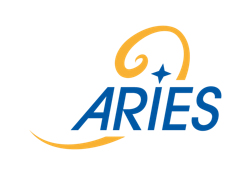
1st ARIES Annual Meeting, May 24th 2018, D. Vilsmeier
Preface
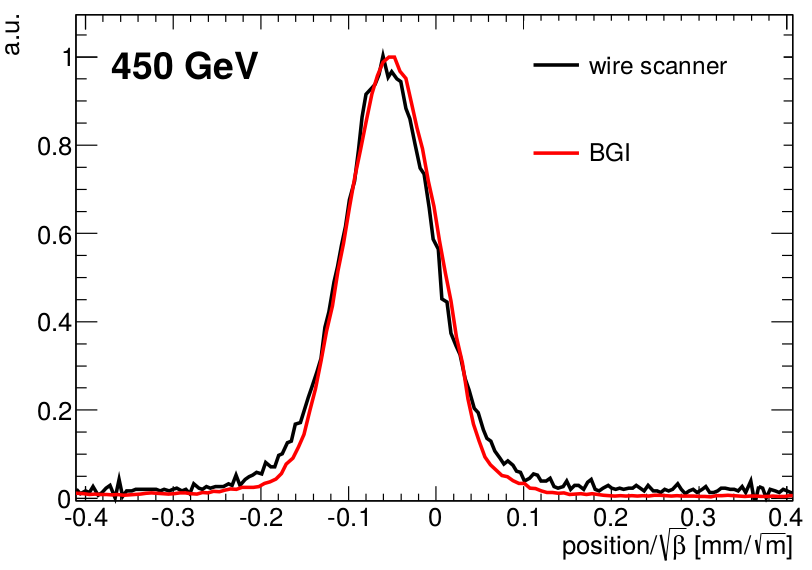
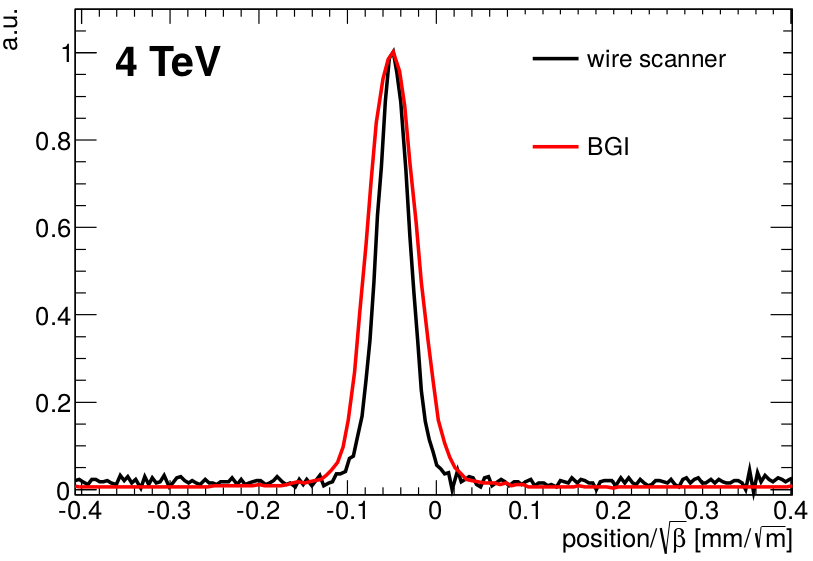
M. Sapinski et al 2012 "The first experience with LHC Beam Gas Ionization Monitor" Proc. IBIC2012
Beam Gas Ionization Monitor installed at LHC (CERN)
Profile broadening compared to Wire Scanner data


1st ARIES Annual Meeting, May 24th 2018, D. Vilsmeier
Profile broadening - why?
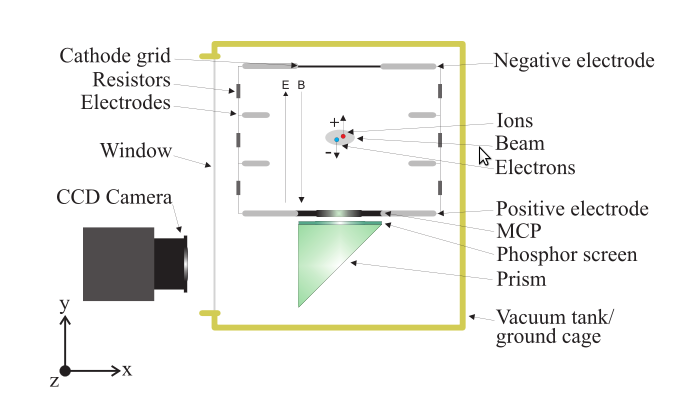
- Distortion of electron trajectories due to beam space charge
- Distortion due to electron gyroradius
- Effects related to MCP
- Optical point-spread function


1st ARIES Annual Meeting, May 24th 2018, D. Vilsmeier
Simulations
PyECLOUD
(electron cloud studies)
PyECLOUD-BGI
(electron movement in IPM)
Available
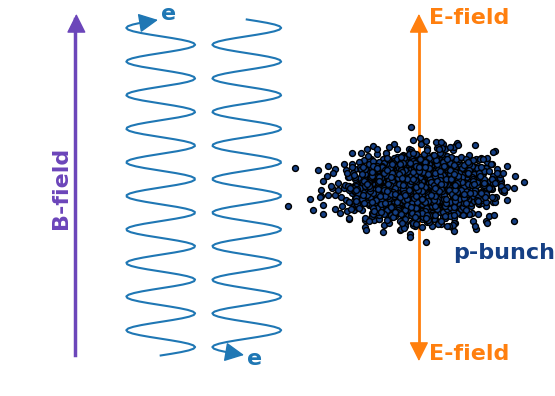
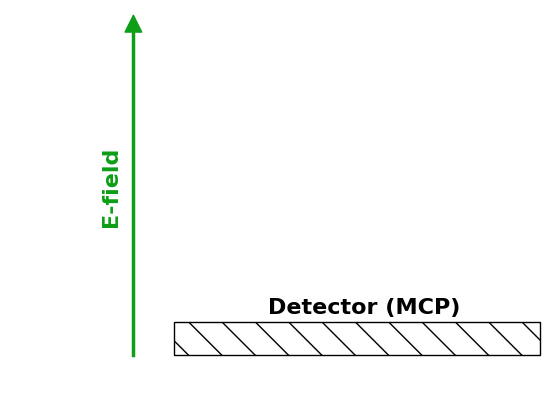
Adaption for IPM
Upgrade


1st ARIES Annual Meeting, May 24th 2018, D. Vilsmeier
Workshop @ CERN | 2016
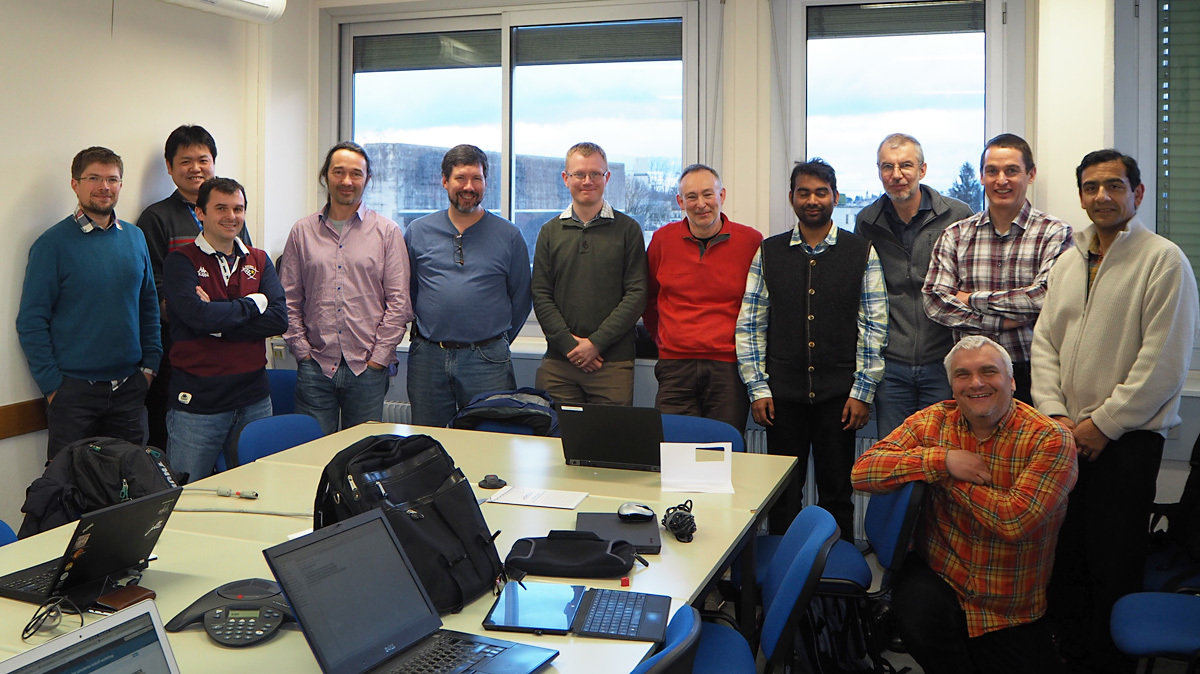


1st ARIES Annual Meeting, May 24th 2018, D. Vilsmeier
Workshop @ CERN | 2016






- Design of electrodes for new devices
- Simulation of field configuration for removing electron cloud from the device volume
- Simulation of profile distortion
- Simulation code involving ionization and transport of electrons in realistic fields
- Code base with core developers
- Infrastructure for code maintenance and user support


1st ARIES Annual Meeting, May 24th 2018, D. Vilsmeier
Simulation codes

Various programs / scripts:
- different applications (LINAC, Synchrotron, ...)
- different solutions
Combine the effort and create a common tool
→ suitable for all different use cases


1st ARIES Annual Meeting, May 24th 2018, D. Vilsmeier
Code modularity
Simulation
Initial
velocities
Beam
fields
Guiding
fields
Particle
tracking
Single and double
ionization cross sections
Gas jet velocity
Uniform fields
Two and three dim.
CST field maps
Analytic formulations
Numerical solvers
Both two and three dim.
Varying in computational
complexity as well as
numerical accuracy


1st ARIES Annual Meeting, May 24th 2018, D. Vilsmeier
Workshop @ GSI | 2017
33 participants
13 institues
9 countries







BINP


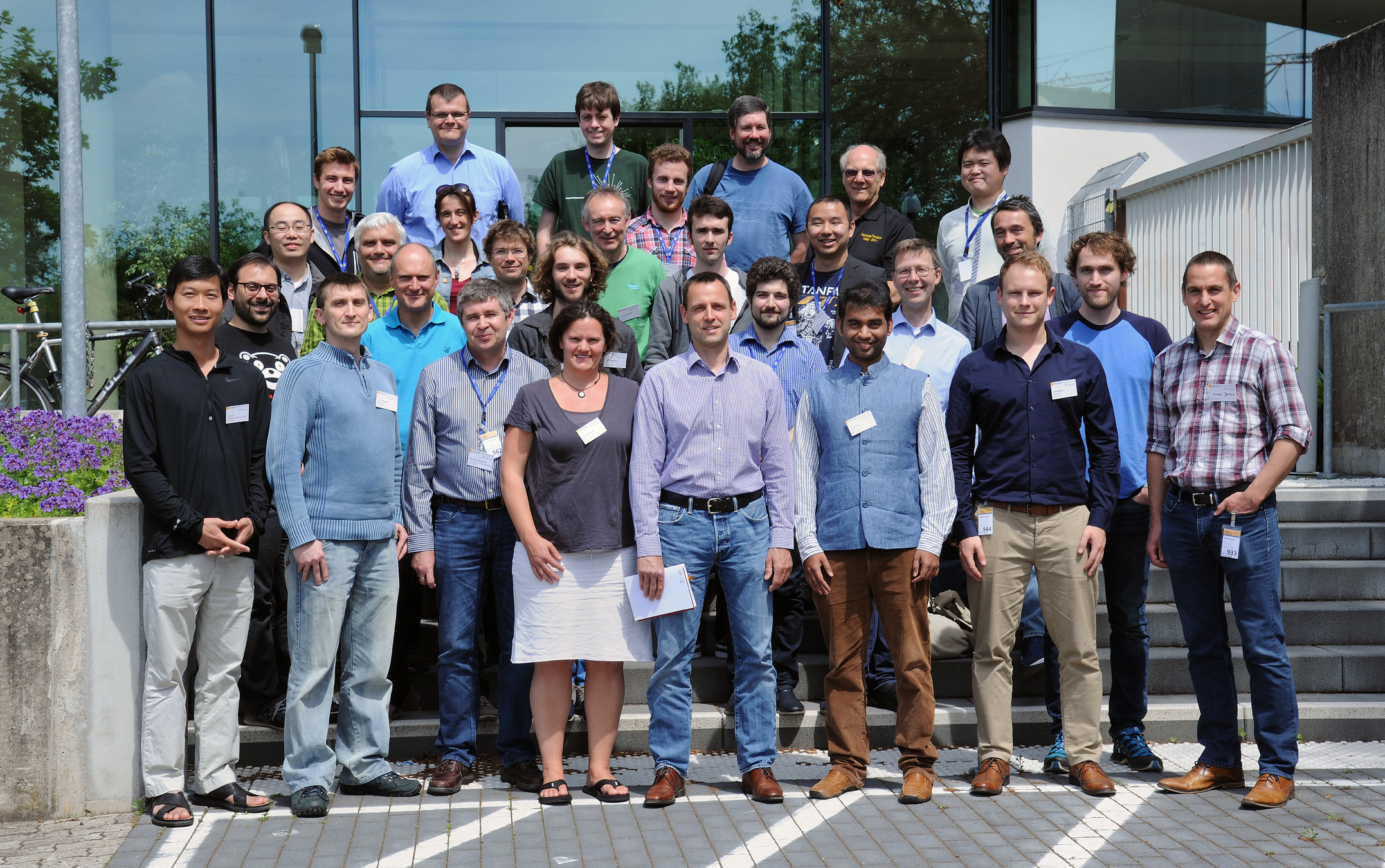

Sponsored by


1st ARIES Annual Meeting, May 24th 2018, D. Vilsmeier
Workshop @ GSI | 2017
Compilation of IPM realization
Operational issues
Simulation code innovation
Present the new simulation tool
Collect feedback from the community
Benchmark simulation against each other
Perform measurements for comparison with data
Discuss new use cases and applications
Investigate corresponding models

Sponsored by


1st ARIES Annual Meeting, May 24th 2018, D. Vilsmeier
Virtual-IPM


- Emphasis on flexibility and extensibility
- Covers a broad range of use cases
- Acts as framework as well as stand-alone application
- Suitable for developers and users
$ pip install virtual-ipm # Easy installation

1st ARIES Annual Meeting, May 24th 2018, D. Vilsmeier
Graphical User Interface
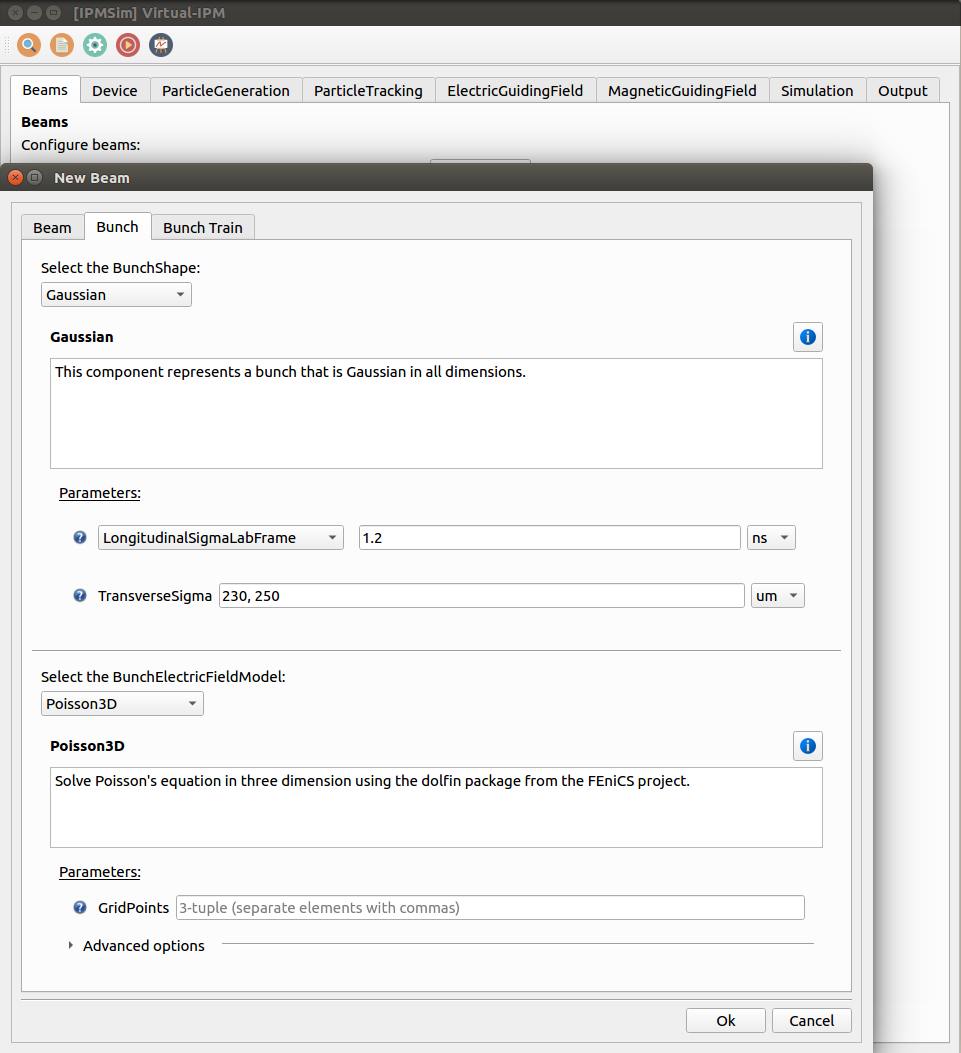
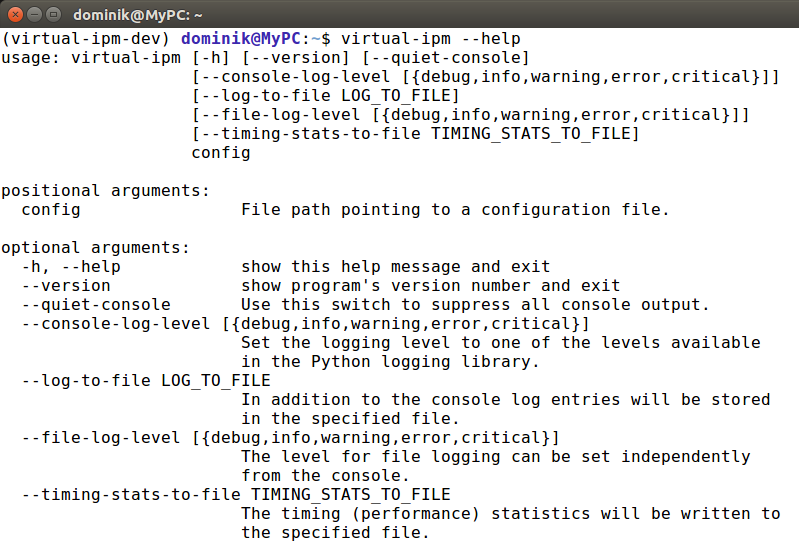
<?xml version="1.0" ?>
<Virtual-IPM version="1.2.2">
<Beams>
<Beam>
<Parameters>
<Energy unit="TeV">6.5</Energy>
<BunchPopulation>2.1e+11</BunchPopulation>
<ParticleType>
<ChargeNumber>1</ChargeNumber>
<RestEnergy unit="MeV">
%(proton mass energy equivalent in MeV)
</RestEnergy>
</ParticleType>
</Parameters>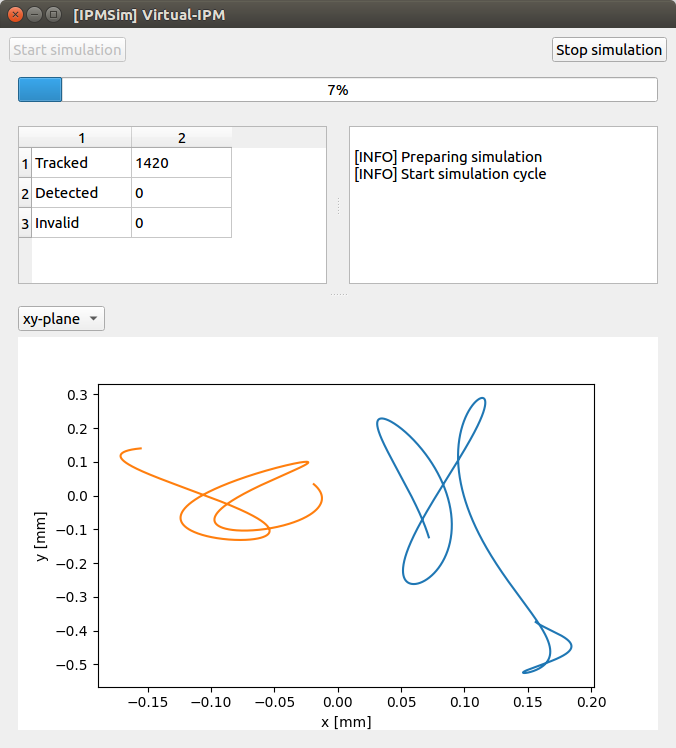


1st ARIES Annual Meeting, May 24th 2018, D. Vilsmeier
Graphical User Interface

XML configuration format
- Descriptive and clear
- Easy in-file modifications
Command Line Interface
- Straightforward access to simulations
- Provides feedback about status
Graphical User Interface
- Adaptive - Enhancements to the code are readily reflected in the GUI


1st ARIES Annual Meeting, May 24th 2018, D. Vilsmeier
Use cases
IPM Profile distortion
- Guiding field non-uniformities
- Beam space-charge interaction
- Influence of ionization momenta
- IPM Profile "rectification", e.g. through device upgrades or software based solutions
IPM Design
- Field cage design
- Magnetic field strength required for suppressing distortions
BIF space-charge effects
- Excited ions move under the influence of beam fields
- Gas jet velocity is retained by ions


1st ARIES Annual Meeting, May 24th 2018, D. Vilsmeier
PS IPM Design
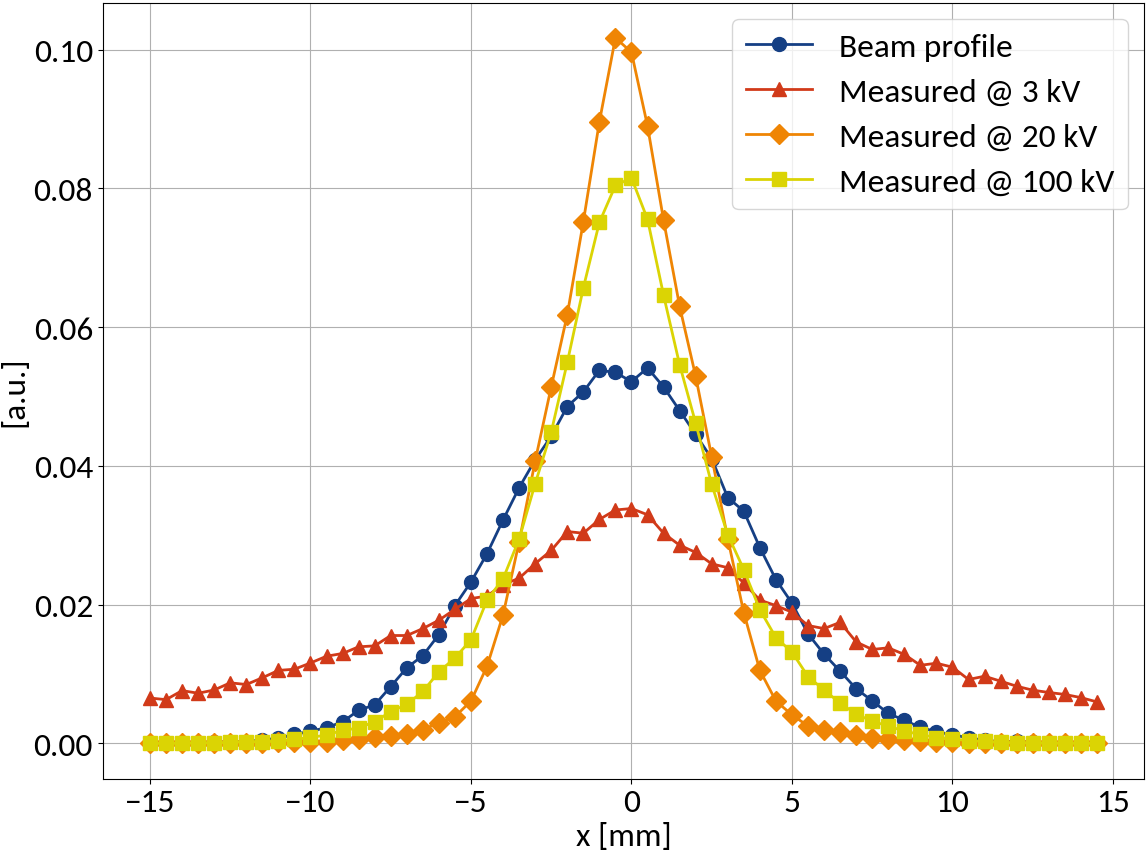
Profile distortion cannot be sufficiently suppressed by electric field
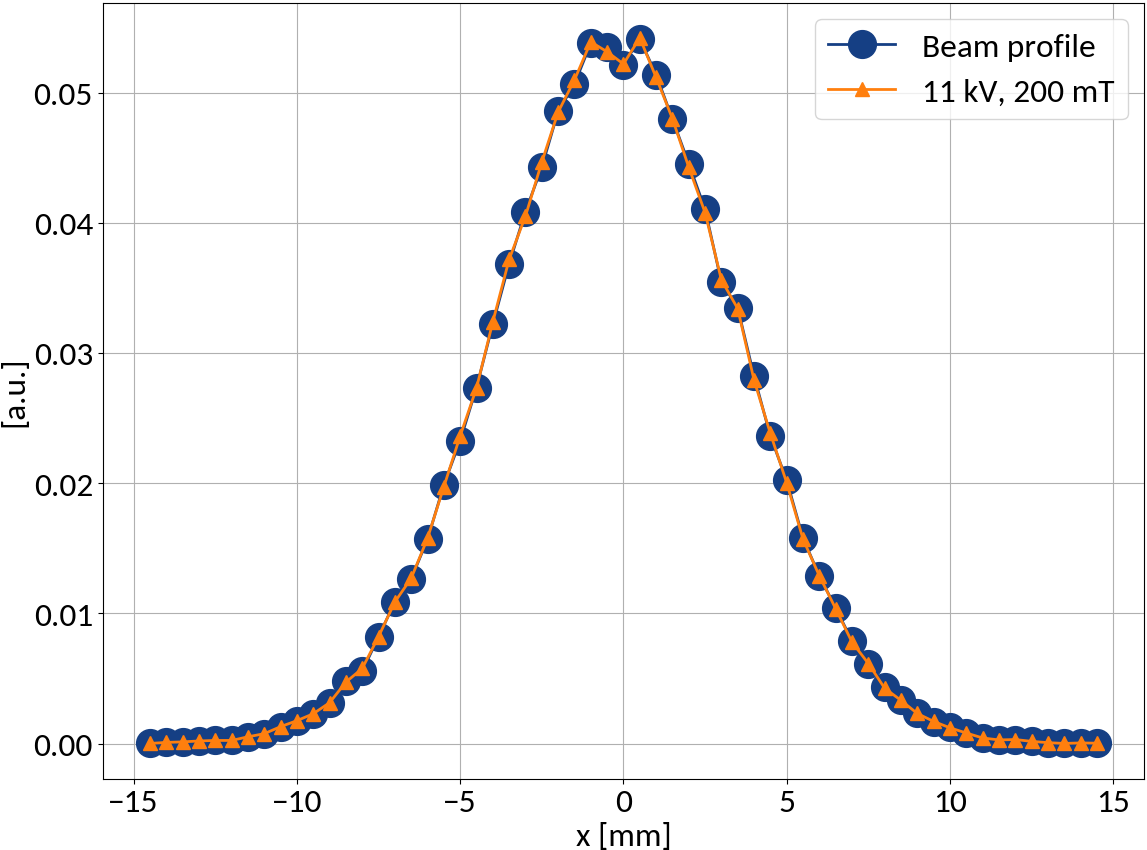
Confirming the requirement for a magnetic guiding field
| Energy | 25 GeV |
| Bunch pop. | 1.33e11 |
| Bunch size | 3.7 x 1.4 mm |
| - length (4σ) | 3.0 ns |


1st ARIES Annual Meeting, May 24th 2018, D. Vilsmeier
IPM & Beam parameters
| Beam Parameter | Value |
|---|---|
| Particle type | Protons |
| Energy | 25 GeV |
| Bunch pop. | 1.33e11 |
| Bunch width (1σ) | 3.7 mm |
| Bunch height (1σ) | 1.4 mm |
| Bunch length (4σ) | 3.0 ns |
| IPM Parameter | Value |
|---|---|
| Electrode distance | 70 mm |
| Applied voltage | 11 kV |
| Applied magnetic field | 0.2 T |


1st ARIES Annual Meeting, May 24th 2018, D. Vilsmeier
LHC Profile distortion

| Beam | |
|---|---|
| Energy | 6.5 TeV |
| Bunch pop. | 2.1e11 |
| Bunch size | 270 x 360 μm |
| - length (4σ) | 0.9 ns |
| IPM | |
|---|---|
| Electrode dist. | 85 mm |
| Applied voltage | 4 kV |
| Magnetic field | 0.2 T |


1st ARIES Annual Meeting, May 24th 2018, D. Vilsmeier
IPM & Beam parameters
| Beam Parameter | Value |
|---|---|
| Particle type | Protons |
| Energy | 6.5 TeV |
| Bunch pop. | 2.1e11 |
| Bunch width (1σ) | 270 μm |
| Bunch height (1σ) | 360 μm |
| Bunch length (4σ) | 0.9 ns |
| IPM Parameter | Value |
|---|---|
| Electrode distance | 85 mm |
| Applied voltage | 4 kV |
| Applied magnetic field | 0.2 T |


1st ARIES Annual Meeting, May 24th 2018, D. Vilsmeier
LHC Profile distortion


Gyro-velocity oscillates due to ExB-drift
Electrons end up with increased velocity
Displacement due to ...
... ionization (Δx1)
... space-charge (Δx2)
... gyro-motion (Δx3)


1st ARIES Annual Meeting, May 24th 2018, D. Vilsmeier
SPS Profile distortion
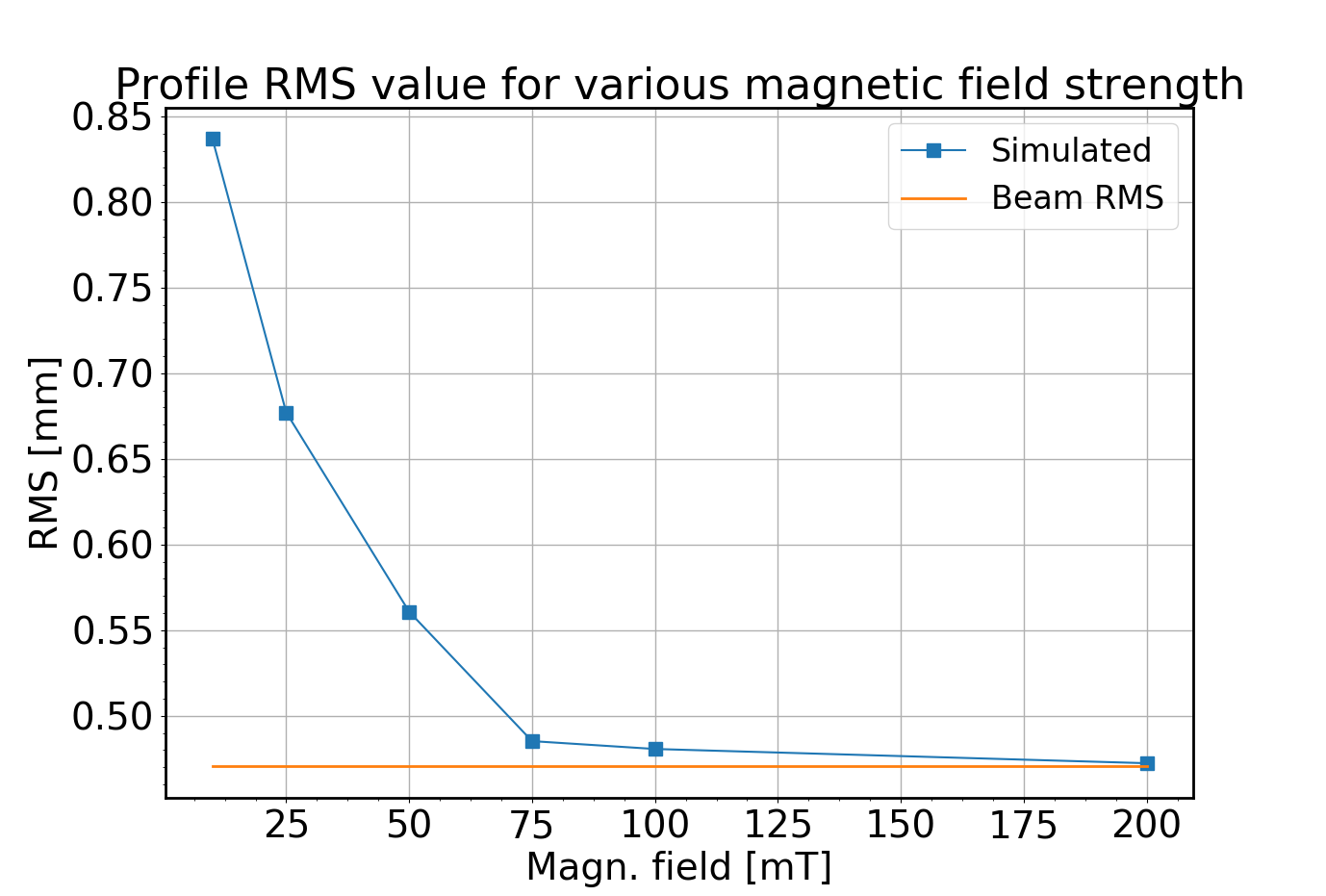
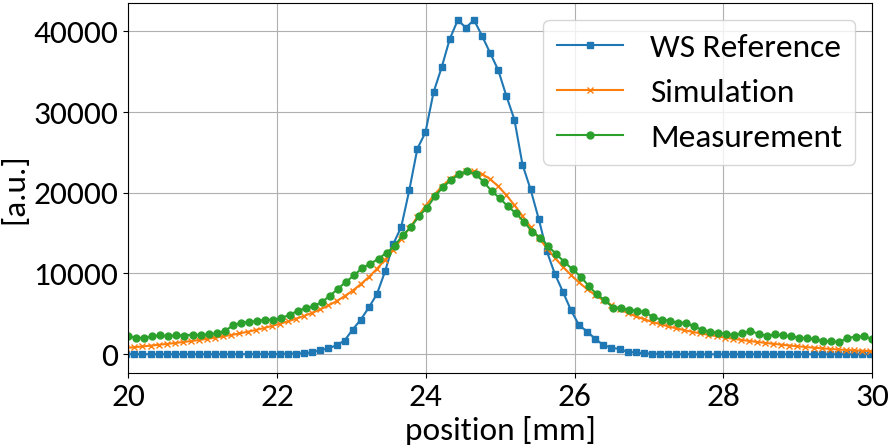
Measurement at 16 mT
Convoluted with 520 μm point-spread function
| Energy | 450 GeV |
| Bunch pop. | 2.86e11 |
| Bunch size | 835 x 451 μm |
| - length (4σ) | 1.6 ns |


1st ARIES Annual Meeting, May 24th 2018, D. Vilsmeier
IPM & Beam parameters
| Beam Parameter | Value |
|---|---|
| Particle type | Protons |
| Energy | 450 GeV |
| Bunch pop. | 2.86e11 |
| Bunch width (1σ) | 835 μm |
| Bunch height (1σ) | 451 μm |
| Bunch length (4σ) | 1.6 ns |
| IPM Parameter | Value |
|---|---|
| Electrode distance | 70 mm |
| Applied voltage | 4 kV |
| Applied magnetic field | 16 mT |


1st ARIES Annual Meeting, May 24th 2018, D. Vilsmeier
BIF for e-Lens @ HL-LHC

Vacuum gauge
N2 fluorescent gas
Beam
Viewport
Lens, Image-Intensifier, Camera
BIF schematic
N2 gas jet


1st ARIES Annual Meeting, May 24th 2018, D. Vilsmeier
BIF for e-Lens @ HL-LHC
Simulation of complex setup for diagnostics based on BIF with supersonic gas jet

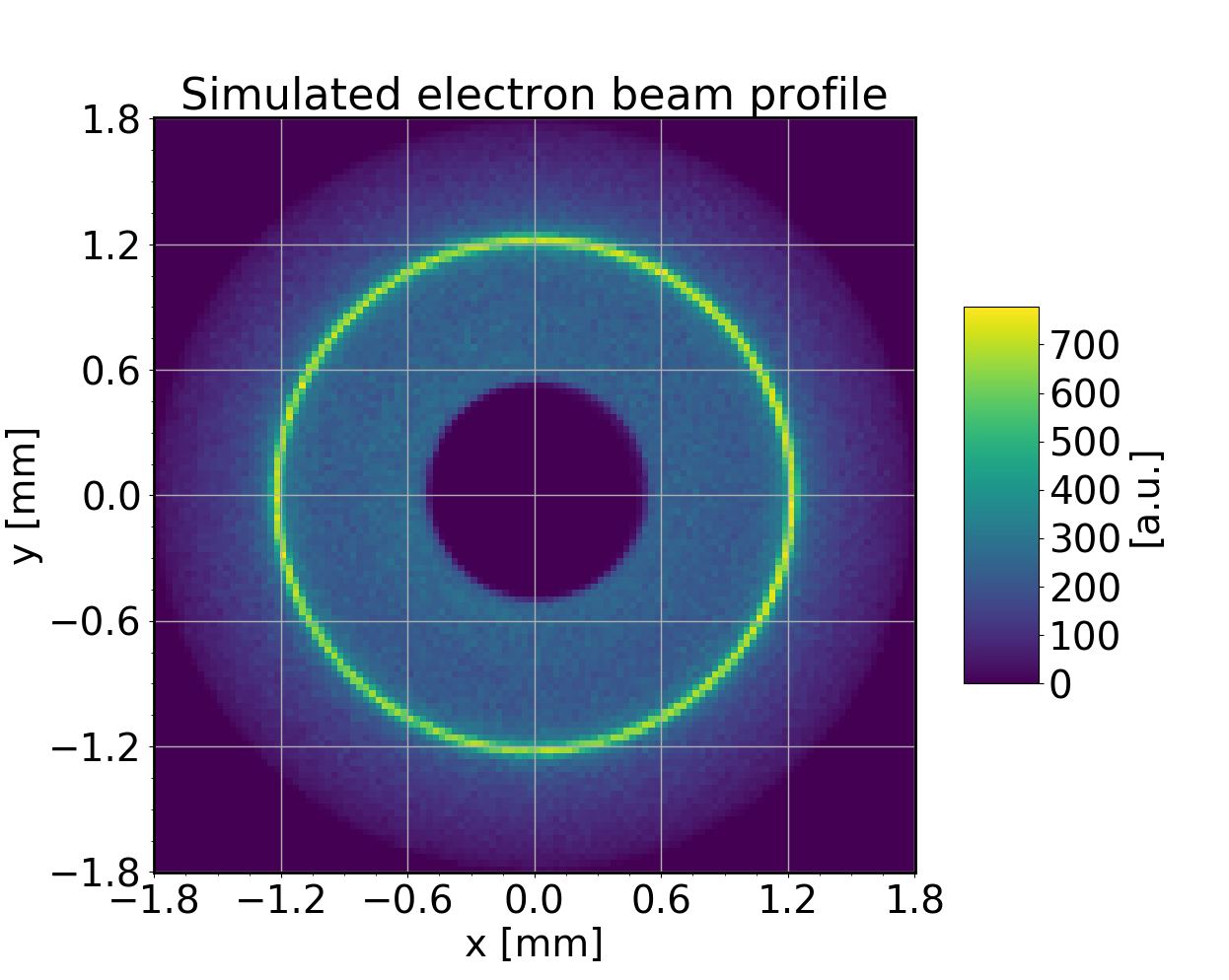
Excited ions interact with beam fields and suffer from a displacement until they decay


1st ARIES Annual Meeting, May 24th 2018, D. Vilsmeier
BIF & Beam parameters
| p-Beam Parameter | Value |
|---|---|
| Particle type | Protons |
| Energy | 7 TeV |
| Bunch pop. | 2.2e11 |
| Bunch width (1σ) | 1.02 mm |
| Bunch height (1σ) | 1.02 mm |
| Bunch length (4σ) | 1.25 ns |
| BIF Parameter | Value |
|---|---|
| Gas jet | 800 m/s, 30 K |
| N2+* lifetime (391 nm) | 60 ns |
| e-Beam Parameter | Value |
|---|---|
| Particle type | Electrons |
| Type | DC beam |
| Energy | 10 keV |
| Beam current | 4 A |
| Inner radius | 1.2 mm |
| Outer radius | 1.8 mm |
e-Lens: Additional 4 T long. magn. field
Preliminary parameters; S. Udrea et al "Preparatory work for a fluorescence based profile monitor for an electron lens" Proc. IBIC2016


1st ARIES Annual Meeting, May 24th 2018, D. Vilsmeier
Profile reconstruction
Machine Learning
... can be used for establishing a relationship between measured profiles and beam profiles.


E.g. deep learning
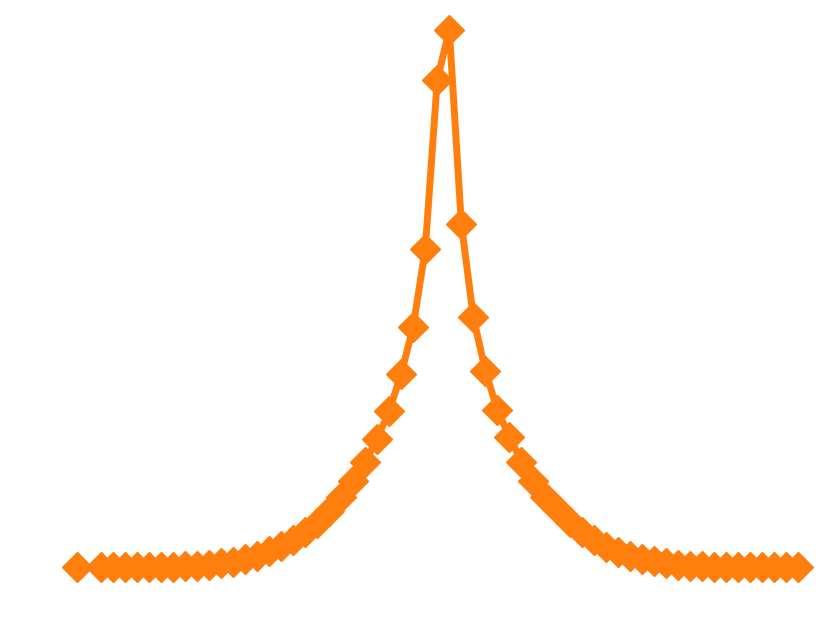
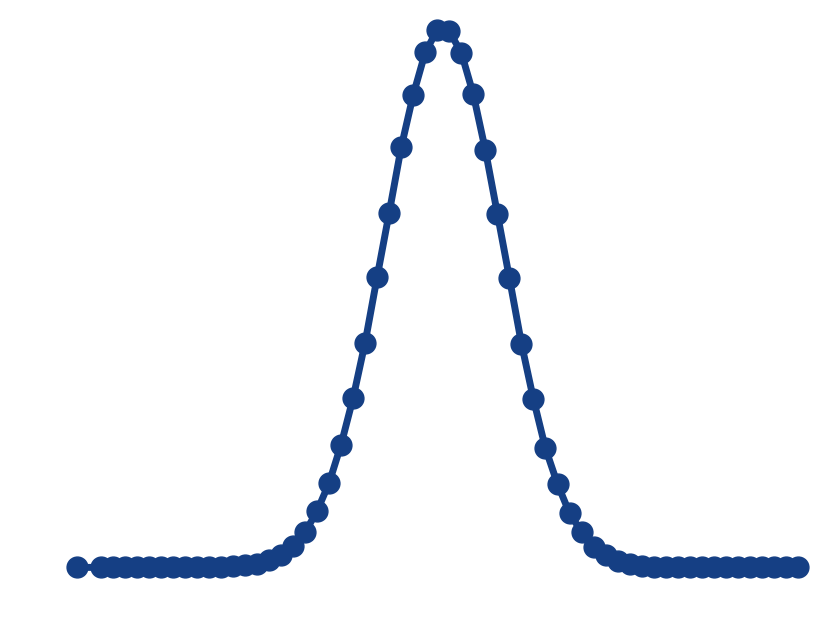
Measured profile
Beam profile
Beam pars.
This relationship is inferred using data obtained from IPM simulations.


1st ARIES Annual Meeting, May 24th 2018, D. Vilsmeier
IPM & Beam parameters
| Beam Parameter | Value |
|---|---|
| Particle type | Protons |
| Energy | 6.5 TeV |
| Bunch pop. [1e11] | 1.1 – 2.1 ppb |
| Bunch width (1σ) | 270 – 370 μm |
| Bunch height (1σ) | 360 – 600 μm |
| Bunch length (4σ) | 0.9 – 1.2 ns |
| IPM Parameter | Value |
|---|---|
| Electrode distance | 70 mm |
| Applied voltage | 4 kV |
| Applied magnetic field | 0.2 T |


1st ARIES Annual Meeting, May 24th 2018, D. Vilsmeier
Profile reconstruction
Application of Machine Learning for deducing the relation between measured (distorted) and original beam profiles
Sweep the relevant parameter space and use simulation data for training
| Parameter | Range |
|---|---|
| Bunch pop. [1e11] | 1.1 – 2.1 ppb |
| Bunch width (1σ) | 270 – 370 μm |
| Bunch height (1σ) | 360 – 600 μm |
| Bunch length (4σ) | 0.9 – 1.2 ns |
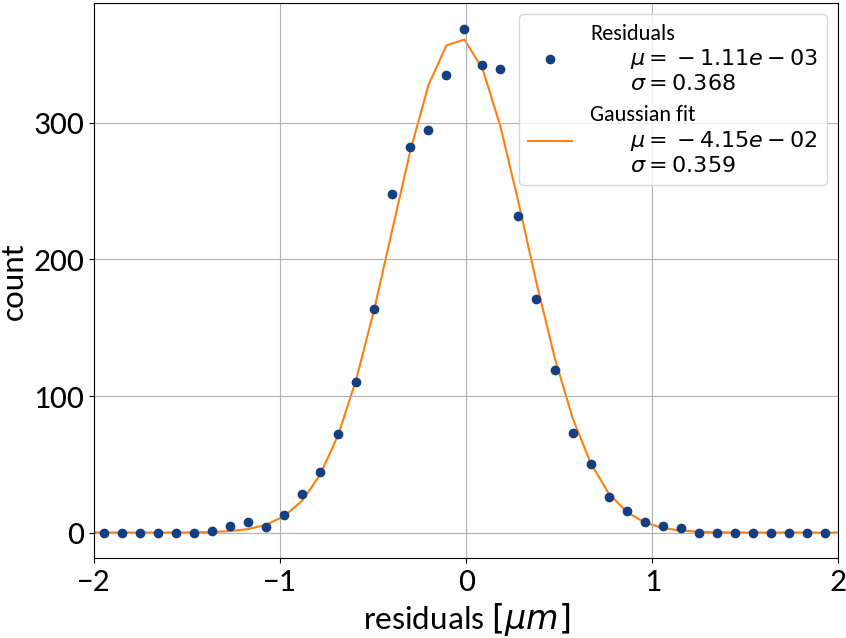
Very good results for testing with simulation data → first tests with measurement data are planned


1st ARIES Annual Meeting, May 24th 2018, D. Vilsmeier
Conclusions
Lots of advancement in the field of IPM simulations
The efforts were combined into a common and generic simulation tool
Allows for simulating a broad range of cases, including LINACs, Synchrotrons and other beam instruments such as BIF monitors
Simulations are not only useful concerning IPM design but can also be used for software-based profile reconstruction (work in progress)
The community efforts have led to an established collaboration concerned about topics related to simulations of IPMs and similar beam instruments


Realization of the various tasks was possible thanks to the active participation of:
Peter Forck (1)
Mariusz Sapinski (1)
Kenichirou Satou (2)
Rahul Singh (1)
James Storey (3)
Serban Udrea (1)
(1) GSI (2) J-PARC/KEK (3) CERN
Thank you
Comprehensive simulations of distortions and their mitigations related to measurements with ionisation profile monitors
By Dominik Vilsmeier
Comprehensive simulations of distortions and their mitigations related to measurements with ionisation profile monitors
1st ARIES Annual Meeting, Riga Technical University (Riga, Latvia), May 24th 2018
- 1,769



